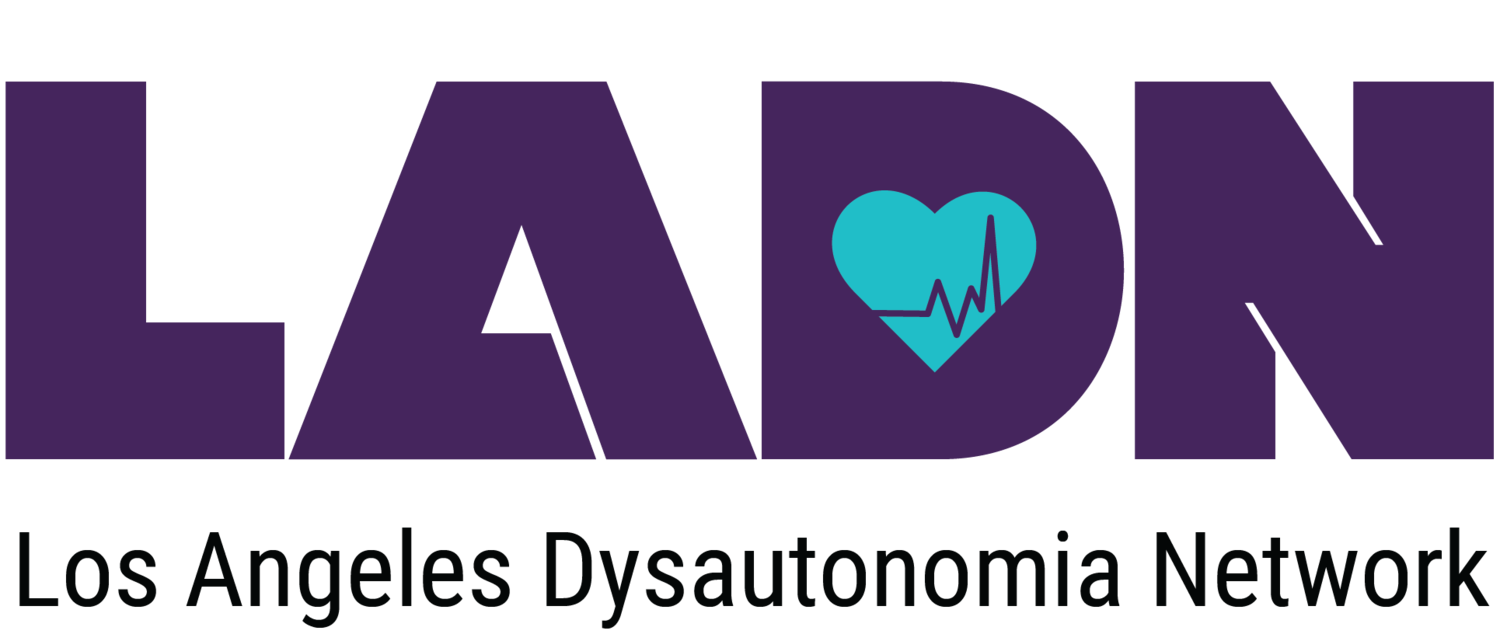About Dysautonomia
Watch our awareness videos below to learn more about POTS and dysautonomia.
Dysautonomia refers to a group of disorders that involve the dysfunction of the Autonomic Nervous System (ANS). The ANS regulates bodily functions that occur automatically, such as heart rate, blood pressure, digestion, sweating, breathing patterns and blood vessel dilation & constriction.
Types of Dysautonomia
There are at least 15 different types of dysautonomia. Below are some of the most common forms.
Postural Orthostatic Tachycardia Syndrome (POTS)
The most common form of dysautonomia, Postural Orthostatic Tachycardia Syndrome (POTS) occurs when a person’s heartrate rises thirty beats per minute or more within ten minutes of standing without a significant drop in blood pressure. Certain diagnostic criteria also call for the heartrate to rise above 120 bpm. Symptoms should be present for six months or more before determining a diagnosis in order to rule out temporary illnesses with similar symptoms. Common symptoms of POTS include tachycardia, lightheadedness, brain fog, headache, and presyncope (pre-fainting) (Shaw et al).
Neurocardiogenic Syncope
Neurocardiogenic syncope refers to episodes of fainting caused by low blood pressure and low heart rate related to the functioning of the central nervous system.
Pure Autonomic Failure (PAF)
Pure Autonomic Failure (PAF) refers to a “generalized state of autonomic failure” which results in orthostatic hypotension, “weakness, dizziness, and presyncope” (Grubb, 2005). PAF occurs twice as frequently in men as in women, and onset typically occurs between the ages of fifty to seventy.
Common Symptoms
Symptoms vary from person to person, even within the same type of dysautonomia.
Hypotension/Hypertension
Tachycardia/Bradycardia
(Pre)Syncope
Dizziness
Brain Fog
Extreme Fatigue
Headache
Click here to download our informational pamphlet all about LADN and dysautonomia!
An excerpt from The Long Haul, created by Danielle Hinde of Doomsday Entertainment. Starring Dr. Brent Goodman from The Mayo Clinic.
View The Long Haul, a documentary about dysautonomia and long haul COVID.
This clip depicts the realities of what living with dysautonomia is like, what the common symptoms are, how dysautonomia is diagnosed, and what types of treatments are available. This film speaks to the difficulties that many dysautonomia patients face in getting accurately diagnosed, as well as the connection between dysautonomia and long haul COVID. View and share this video to help spread awareness and shorten diagnostic delays!
Sources:
Cleveland Clinic: https://my.clevelandclinic.org/health/diseases/6004-dysautonomia
Grubb, B.P. & Olshansky, B. (2005), Syncope: Mechanisms and Management (2nd ed.). Blackwell Publishing.
Grubb, B. P. (2008). Postural Orthostatic Tachycardia Syndrome. Circulation, Vol. 117 (21), https://doi.org/10.1161/CIRCULATIONAHA.107.761643
Johns Hopkins Medicine: https://www.hopkinsmedicine.org/health/conditions-and-diseases/postural-orthostatic-tachycardia-syndrome-pots
Medical News Today, “What’s to Know About Dysautonomia?” by Tim Newman https://www.medicalnewstoday.com/articles/76785#treatment
National Institute of Neurological Disorders and Stroke: https://www.ninds.nih.gov/Disorders/All-Disorders/Dysautonomia-Information-Page#disorders-r1
Shaw et al. (2019). The Face of Postural Orthostatic Tachycardia Syndrome – Insights from a Large Cross-sectional Online Community-based Survey. Journal of Internal Medicine, Vol. 286(4), 438-448. https://pubmed.ncbi.nlm.nih.gov/30861229/
